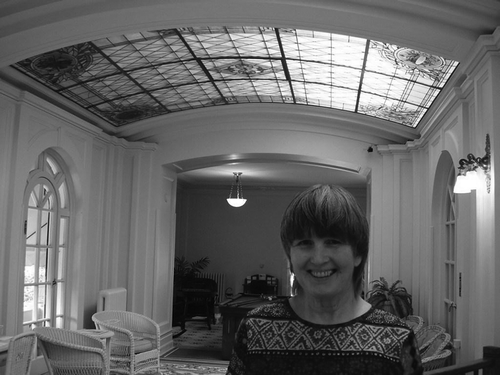I first met her in one of the yearly conferences of the Society for Clinical and Experimental Hypnosis (SCEH), around 1988–1989. She was hard to miss, a tall woman with an ebullient personality who graciously offered her friendship and support to someone just beginning his career. Those were heady days for hypnosis, with researchers and clinicians of the caliber of, among others, Erika Fromm, Ernest Hilgard, Martin Orne, Nick Spanos, and Herb Spiegel, in the older generation, and Ken Bowers, John Kihlstrom, Irving Kirsch, David Spiegel, and of course Helen, in the younger generation. The main journals of hypnosis were respected and supported by clinicians and researchers of diverse viewpoints, and the hypnosis conferences were full of fascinating discoveries.
Helen’s work on hypnosis covered a wide range of important topics including the relation of hypnotizability to other constructs, such as daydreaming (e.g., Crawford, Citation1982), and attention (e.g., Crawford, Brown, & Moon, Citation1993), hypnotic analgesia (e.g., Crawford, Gur, Skolnick, Gur, & Benson, Citation1993), and the neuropsychology of hypnotizability and hypnosis (e.g., Sabourin, Cutcomb, Crawford, & Pribram, Citation1990–1991). Although I have read and cited many of her works throughout the years (including in a paper currently under review), while reviewing her list of publications for this obituary I was reminded of how many important publications she produced during her short career.
She was President of SCEH (1989–1991) and of Division 30 of the American Psychological Association (APA; 1984–1985), and received many recognitions, including the Ernest R. Hilgard Award for Scientific Excellence from the International Society of Hypnosis, the Bernard B. Raginsky Award for Leadership and Achievement from SCEH, and the APA Division 30 Award for Distinguished Contributions to Scientific and Professional Hypnosis.
I know that some of us explicitly or implicitly considered what happened to Helen tragic at the time, but with the perspective of time I have realized how much we academically overvalue ourselves and what we do, and how much we disregard lives and activities that are at least as valuable and meaningful. In the case of Helen, fortunately, I do not need to guess how she felt about this because through Julienne she wrote to me in 2007 the following to share with her colleagues:
I remember working with Jack Hilgard at Stanford where we had wonderful times doing hypnosis research and going to hypnosis conferences. I enjoyed working greatly in various countries, studying, teaching, and researching hypnosis in such places as Budapest. I was a professor of psychology until I had a heart attack, but I am healthy and have no pain and hope to never have another one.
I live with my daughter, Julienne Crawford, who you may well have met at some of the conferences. My daughter Julienne has been so helpful for me and has a marvelous personality to share with me her beauty.
I have become an artist in some ways. I enjoy making necklaces greatly. I enjoy the colors associated with the necklaces. I also enjoy coloring stained glass designs and putting them in the windows. I like to go to music concerts, river cruises where you can see birds, and museums. I love to go to antiques malls, and junk stores to look for material I can make into necklaces. I love to lie in bed and listen to the birds outside.
I can’t hike, but my walking is almost perfect now with a cane. I had a heart attack and I also fell and hurt my leg. It was pleasure that I could use all my hypnosis skills to help eliminate the pain when I fell.
I just love my life.
As Julienne wrote in a recent obituary, Helen “continued to spread her joy, compassion, and desire to help all those around her” and the hypnosis community is especially indebted to her.
References
- Crawford, H. J. (1982). Hypnotizability, daydreaming styles, imagery vividness, and absorption: A multidimensional study. Journal of Personality and Social Psychology, 42, 915–926. doi:10.1037/0022-3514.42.5.915
- Crawford, H. J., Brown, A. M., & Moon, C. E. (1993). Sustained attentional and disattentional abilities: Differences between low and highly hypnotizable persons. Journal of Abnormal Psychology, 102, 534–543. doi:10.1037/0021-843X.102.4.534
- Crawford, H. J., Gur, R. C., Skolnick, B., Gur, R. E., & Benson, D. M. (1993). Effects of hypnosis on regional cerebral blood flow during ischemic pain with and without suggested hypnotic analgesia. International Journal of Psychophysiology, 15, 181–195. doi:10.1016/0167-8760(93)90002-7
- Hilgard, E. R., Crawford, H. J., Bowers, P., & Kihlstrom, J. (1979). A tailored SHSS:C, permitting user modification for special purposes. International Journal of Clinical and Experimental Hypnosis, 27, 125–133. doi:10.1080/00207147908407552
- Sabourin, M. E., Cutcomb, S., Crawford, H. J., & Pribram, K. (1990–1991). EEG correlates of hypnotic susceptibility and hypnotic trance: Spectral analysis and coherence. International Journal of Psychophysiology, 10, 125–142. doi:10.1016/0167-8760(90)90027-B

